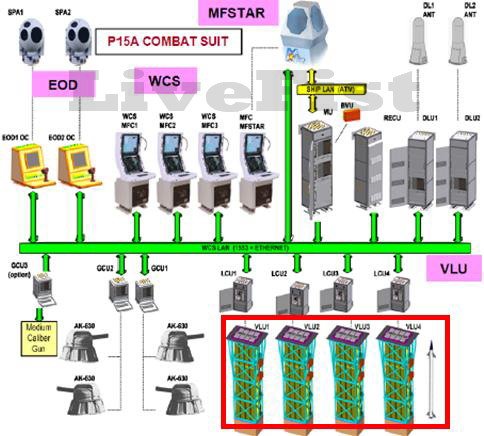Prashant12
New Member
- Joined
- Aug 9, 2014
- Messages
- 3,027
- Likes
- 15,002
Astra missile to provide aerial defence to Navy warships
New Delhi: In a major success for the indigenous weapons programme, the Ministry of Defence has decided to develop the homegrown Astra air-to-air, beyond visual range missile into an air defence missile system for the Navy which needs such short-range systems to defend its warships from incoming enemy weapons.
The Astra missile has been developed by the DRDO for front-line combat aircraft such as the Sukhoi-30 and the LCA Tejas meant for shooting down enemy planes at a distance of 70-80 km and was being developed as an air-to-air missile system.
"As part of a proposal cleared by the Defence Acquisition Council led by Defence Minister Nirmala Sitharaman, the Navy will be provided with 14 vertically-launched short range surface to air missile systems for protecting its warships. Of these, four systems will be procured through a global tender while the remaining would be developed indigenously by the DRDO," sources told MyNation.
"The Navy is looking for 10 homegrown SR-SAMs and the DRDO will be developing the Astra missile as the solution for these requirements. The Navy is looking at a missile system which can intercept enemy missiles or aircraft at ranges up to 15 kilometres and the Astra would be able to fulfill this role," the sources said.
The Navy has been working on providing air defence systems to its warships and has been getting the long-range surface-to-air missile systems (LR-SAMs) from Israel while it has been projecting a requirement for short-range weapon systems also.
As per an older plan, the requirement was to be fulfilled through a joint venture programme with France, but after the Army and the Air Force withdrew from it, the cost of the project escalated too much for the maritime force.
The Astra missile programme has been quite successful in meeting the requirements of the Air Force, which has been evaluating it. The Air Force wants its range to be enhanced at different stages to end the reliance on foreign players for these needs.
https://www.mynation.com/news/astra-missile-aerial-defence-indian-navy-warships-pe7n39
New Delhi: In a major success for the indigenous weapons programme, the Ministry of Defence has decided to develop the homegrown Astra air-to-air, beyond visual range missile into an air defence missile system for the Navy which needs such short-range systems to defend its warships from incoming enemy weapons.
The Astra missile has been developed by the DRDO for front-line combat aircraft such as the Sukhoi-30 and the LCA Tejas meant for shooting down enemy planes at a distance of 70-80 km and was being developed as an air-to-air missile system.
"As part of a proposal cleared by the Defence Acquisition Council led by Defence Minister Nirmala Sitharaman, the Navy will be provided with 14 vertically-launched short range surface to air missile systems for protecting its warships. Of these, four systems will be procured through a global tender while the remaining would be developed indigenously by the DRDO," sources told MyNation.
"The Navy is looking for 10 homegrown SR-SAMs and the DRDO will be developing the Astra missile as the solution for these requirements. The Navy is looking at a missile system which can intercept enemy missiles or aircraft at ranges up to 15 kilometres and the Astra would be able to fulfill this role," the sources said.
The Navy has been working on providing air defence systems to its warships and has been getting the long-range surface-to-air missile systems (LR-SAMs) from Israel while it has been projecting a requirement for short-range weapon systems also.
As per an older plan, the requirement was to be fulfilled through a joint venture programme with France, but after the Army and the Air Force withdrew from it, the cost of the project escalated too much for the maritime force.
The Astra missile programme has been quite successful in meeting the requirements of the Air Force, which has been evaluating it. The Air Force wants its range to be enhanced at different stages to end the reliance on foreign players for these needs.
https://www.mynation.com/news/astra-missile-aerial-defence-indian-navy-warships-pe7n39






